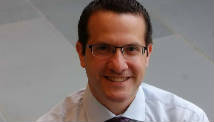
The
following series is intended to lay out some helpful argument to
demonstrate the existence of God. Philosophically constructed arguments
as such are not the basis of my belief in Yahweh, the God of the Old and
New Testaments, for he’s revealed clearly both in creation and in human
nature (cf. Romans 1). The whole world is evidence for his existence.
Nevertheless, i’ve attempted to take that evidence and reformulate it
into helpful arguments that can be used to bolster the faith of
Christians and refute those who contradict.
But before we delve straight into the arguments themselves we should
note two things: the centrality of worldviews and the impossibility of
neutrality in holding and formulating worldviews.
The importance of worldviews. The notion of
worldview is key here. Technically speaking, the term worldview is
looser than a philosophy, but the overlap is great. Here’s my working
definition:
A worldview is a spoken (or unspoken),
consistent (or less consistent), often assumed, though rarely
articulated, comprehensive vision of life. Here’s a more philosophical definition, A
worldview is a network of guiding assumptions regarding the nature of
reality (i.e. metaphysics), knowledge and truth (i.e epistemology), what
we should value (i.e. value theory) and how we should live our lives
(i.e. ethics).
Here, given the definitions above, we all have a worldview. And, more
importantly, we should develop their worldview. Since everyone thinks
“worldviewishly,” the least we can do is do it well. Likewise, we should
strive to be more self-conscious about our worldview development. Too
often- and I’m the first to admit this about myself- we passively soak
up bits-and- pieces of the worldview of the surrounding culture.
The problem of neutrality. Since we all have views regarding the most important issues of life (What’s real? How and what do I know? How should I live? What is valuable? ), to deny this is naïve. Now, let me clarify for a second. I’m not saying
that we have views on every single thing. Personally, I have no views
on string theory, or the status of quarks. So, if someone tries to
persuade me of them views on those matters it’s fairly easy. But
talking about a worldview, the lens through which we integrate our
entire lives, is something very different. No one is either neutral or
objective. I also reject the modernist and enlightenment notion of
objectivity. None of us has “God’s eye view” of reality. We’re always
firmly planted in our historical contexts, with its biases (whether
they’re helpful or harmful), and various ways of seeing things.
Now, one might be tempted to think that I’ve opened the door wide for
relativism, but I don’t think that’s the case. When I reject the notion
of objectivity, I’m not saying we can’t know truths that exist
independently of our options. I do believe we can have such knowledge.
What I reject as philosophically naïve is the notion that we can come to
weighty matters without concern, without prejudice, and with the ‘cool
detachment’ of Reason (notice the capital R).







